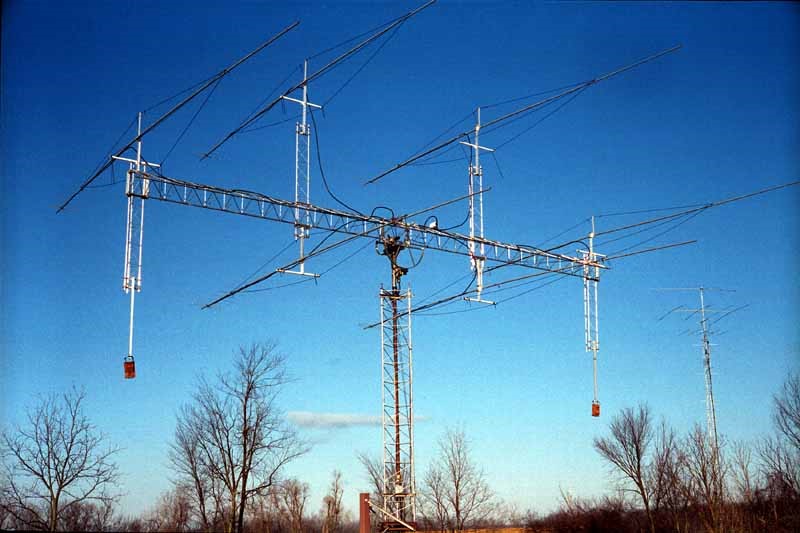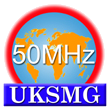 Welcome to Six Metres.
Welcome to Six Metres. You have probably heard the phrase ‘the Magic Band’ in connection with 50MHz and possibly wondered what is so special about it. There is no denying the fact that there are a large number of dedicated, some might say fanatical, band users who will happily talk ‘Six Metres’ to anyone who will listen explaining why the band is special to them. That’s what we intend to do in the following paragraphs.
Background The Six Metre band is located at the lower end of the VHF spectrum and exhibits all of the characteristics that you would expect of a VHF band. This is particularly true during the sunspot minimum years when, for the most part, it is similar to two metres. The maximum useable frequency or MUF rarely reaches the ten metre band during this time never mind six metres and consequently the band is fairly quiet except for sporadic-E during the summer and (to a lesser extent) in the winter months.
 Even when the MUF doesn't reach 50 MHz, solar activity can be the trigger that will allow various other types of propagation to occur. In fact, 6m is probably the only band that will support just about every form of propagation that you can think of and this is just one of the many things that make it so interesting and, at times, unpredictable. It is also the main reason why it has become known as ‘the Magic Band’.
Even when the MUF doesn't reach 50 MHz, solar activity can be the trigger that will allow various other types of propagation to occur. In fact, 6m is probably the only band that will support just about every form of propagation that you can think of and this is just one of the many things that make it so interesting and, at times, unpredictable. It is also the main reason why it has become known as ‘the Magic Band’.
For many people a large portion of the band remains unexplored territory, being given over to more esoteric modes. FM is well catered for but activity tends to be in small pockets around the country however, several FM repeaters are now well established.
In recent years the rise of digital communication has seen a large increase in the use of data modes.
The ability of data modes to perform well under testing band conditions and at relatively low power levels has seen a marked increase in the number of Earth Moon Earth (EME) capable stations. So much so that it is now common-place for DX-peditions to include 50MHz EME as part of their package especially if the operation is outside traditional periods of good propagation or is from a particularly remote location. You no longer need an antenna like this for EME although it helps!
Most SSB and CW operation takes place in the lower 300kHz portion of the band. From 50 MHz up to around 50.080 MHz the band is populated by various beacons however at the time of writing this is due to change with all of these beacons due to migrate 400kHz higher in frequency. The reason for this is to release a large portion of prime frequency space at the bottom of the band to other uses. In addition, a synchronised beacon chain is gradually being implemented in the bottom 30kHz. This proposal, which was ratified in Region 1 at the Sun City conference in 2012, allocates a 10kHz slot to each of the three Regions within which the beacon chain operates. Each beacon comprises both an analogue and a digital component.
Go to page >>
© ℗ UKSMG Unless otherwise stated, all content copyright UKSMG. This Web site is published on a strictly non-profit basis but please note that UKSMG is not a registered non-profit organisation. The opinions expressed are the opinions of the authors alone and not that of any associated organisations or employers or hosting Internet service providers. No material may be used in other media unless full credit is given to the UK Six Metre Group or the credited original source of the material.

